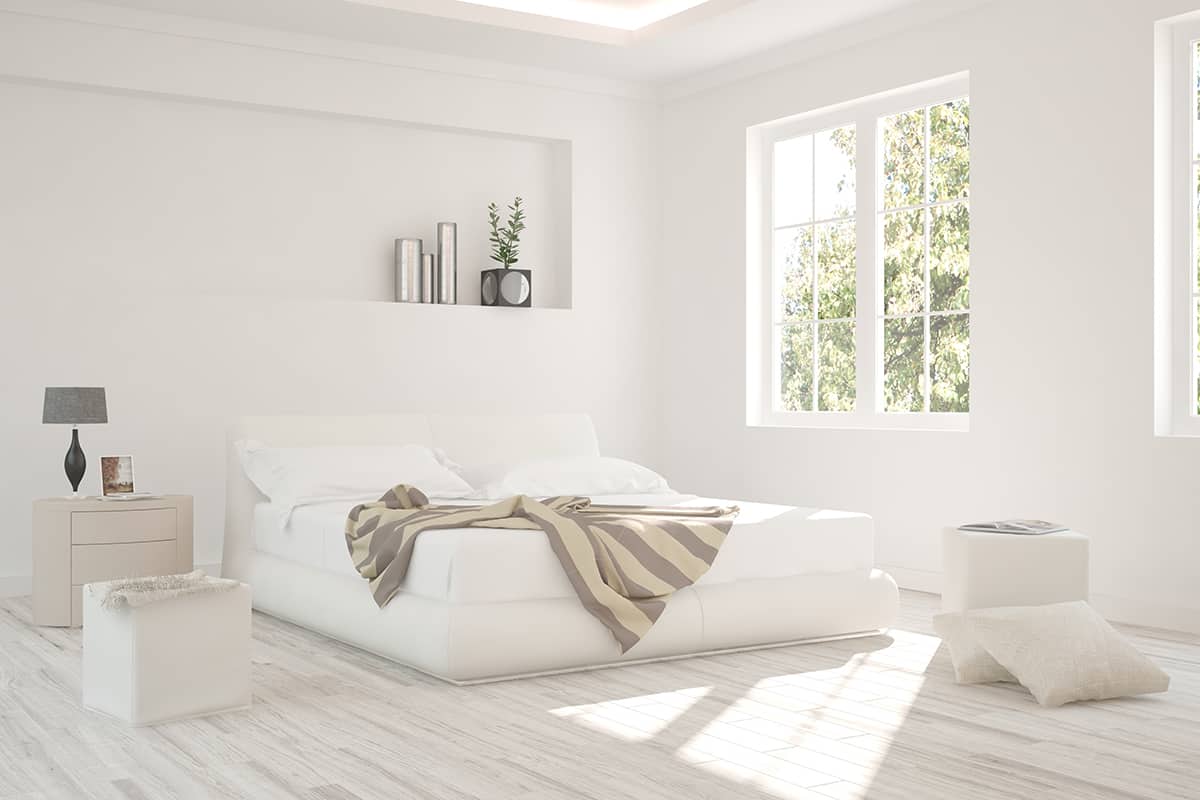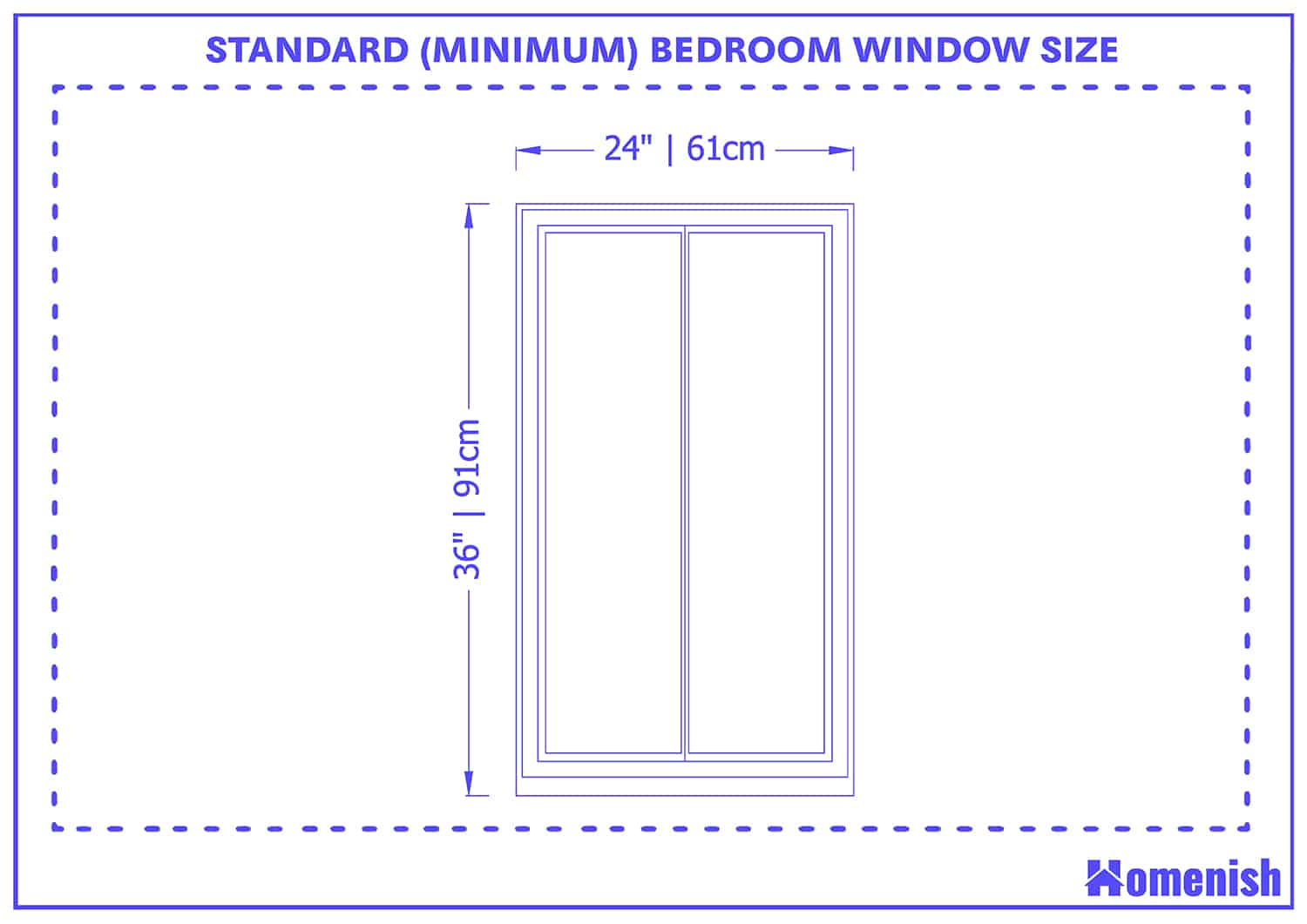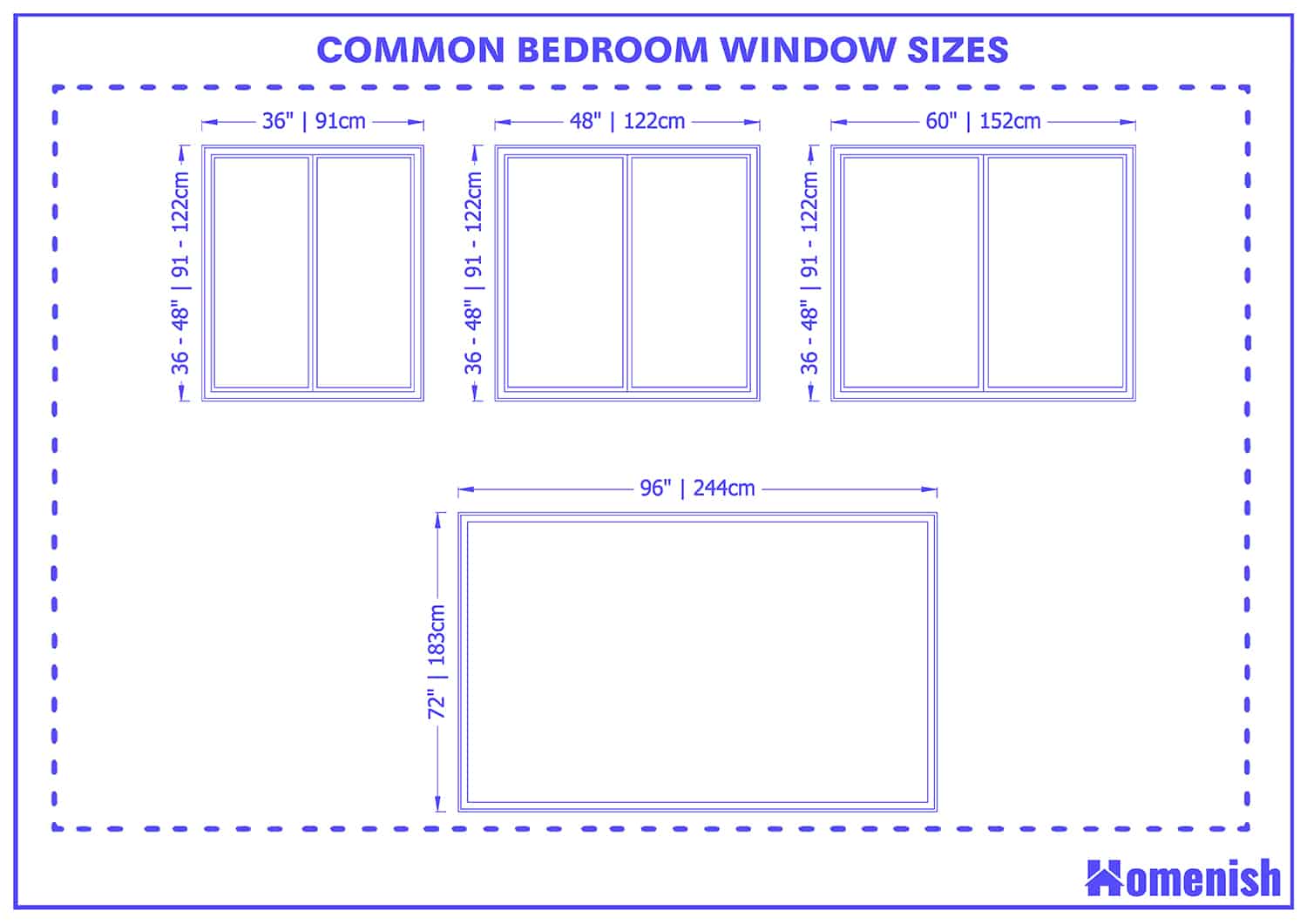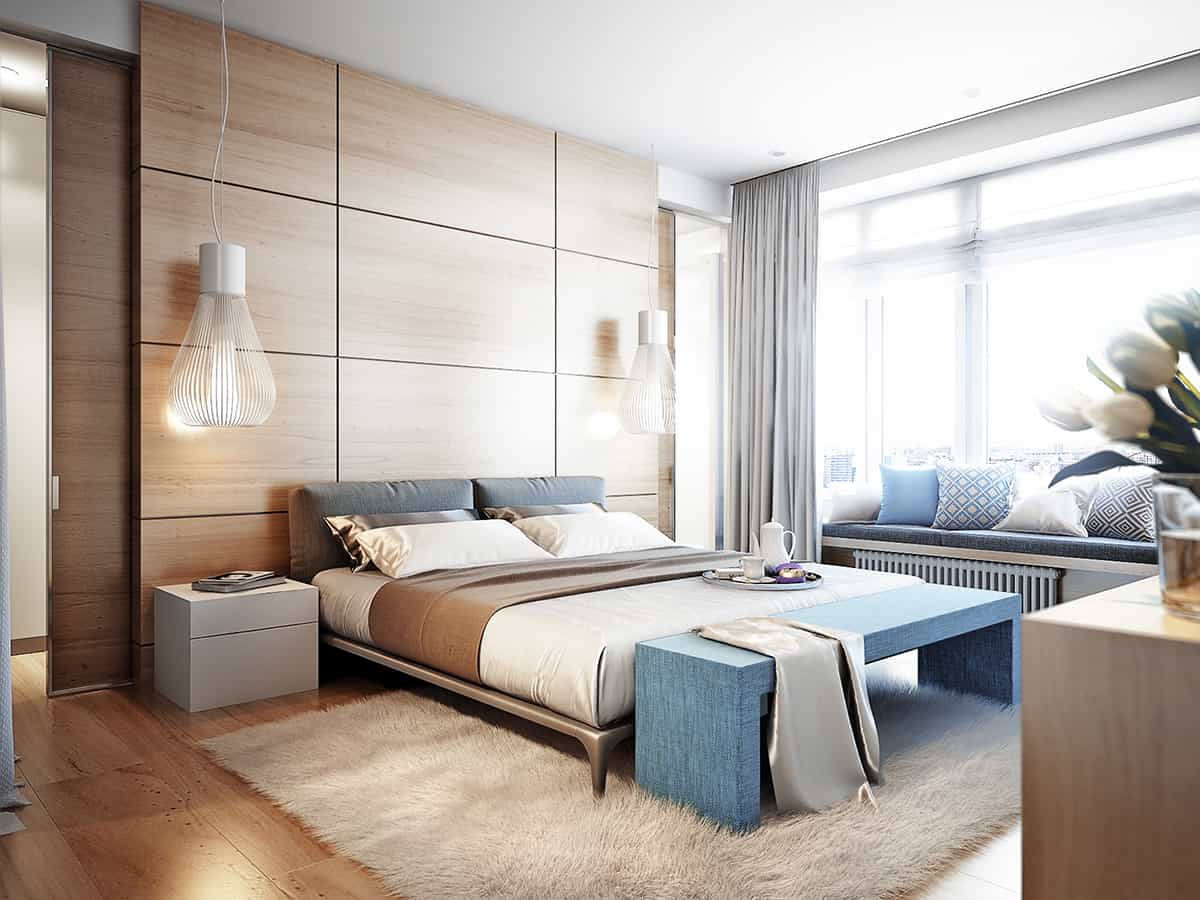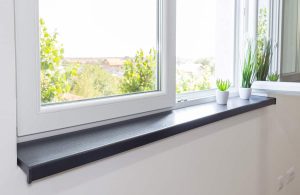Bedroom windows do not come in standard sizes as such, but there is a range of window sizes that are more commonly used, and therefore they can usually be bought ‘off the shelf’ as opposed to being custom made specifically for your home.
If you are building an extension and need to install bedroom windows, or if you are adding a new bedroom window to an existing building, then it is wise to use one of the more common sizes because this will be significantly more cost-effective than having a custom size window specially made.
A common-sized bedroom window will also be cheaper to replace if it ever gets broken or needs updating, and you will find that window dressings such as curtain poles, blinds, and curtains all come in sizes that work best in conjunction with common window sizes. Here we will look at the dimensions commonly used for bedroom windows in modern homes and the minimum requirements which need to be met.
The minimum size requirement of a bedroom window in most states is 24 inches wide by 36 inches tall. The most common window sizes used for bedrooms have width measurements of 36 inches, 48 inches, and 60 inches. Bedroom window heights are usually 3 or 4 feet, though a picture window can be as high as 6 feet.
Standard (Minimum) Bedroom Window Size
In order for a bedroom to be legally classified as a bedroom, then it needs to have at least one window which meets the minimum size requirements. This is because we tend to spend around 10 hours of each day asleep in our bedrooms, which is a significant portion of our time, and therefore a bedroom is considered to be a primary living space.
Bedrooms need to have windows that meet a minimum size requirement so that they can be used as a fire escape in the event of an emergency. This is the reason why you may not be allowed to list your basement conversion as a bedroom, even if it has a bed in it when it doesn’t have a window or some form of fire escape that meets building code. The minimum size requirement of a bedroom window across most states is 24 inches wide by 36 inches tall. This equates to 2 feet wide by 3 feet tall.
This is a small window by most people’s standards, and it won’t let much natural light into the room, but it is sufficient to escape out of and therefore can be used if you want to ensure a room can be classified as a bedroom. Most people, however, like to have larger windows that are more in proportion with the size of their bedroom. While a minimum-sized window might look ok in a box room, it would look odd in a large space.
Common Bedroom Window Sizes
The common sizes of bedroom windows are those which are found as standard across most modern homes. These are the windows that are made in predetermined factory sizes, and most builders will use these when building a house, choosing to plan the properties frame around the window size rather than building a frame and then having a custom window made later. This will save a lot of money because factory size windows can be as much as half the cost of custom-made windows.
The most common window sizes used for bedrooms have width measurements of 36 inches, 48 inches, and 60 inches. You will probably notice that these windows run in exactly 1-foot increments, with 36 inches being 3 feet, 48 inches being 4 feet, and 60 inches being 5 feet. Choosing measurements like this simply makes things easier in the construction industry.
Windows that are made to factory size will generally always be in increments of one foot, so if you are going for a larger window, then choose one with a width of 6 or 7 feet. Picture windows are popular in large bedrooms as these allow plenty of natural light to flow in and illuminate the space, and they can also highlight a nice view.
If the bedroom is quite sizable, then a picture window will also look more proportional to the room compared to a small window. Picture windows are usually 8 feet wide. The height of standard windows will also be in measurements of 1-foot increments.
Generally, the most common bedroom window sizes will have a height of 3 or 4 feet, although this can be bigger in the case of picture windows, which will more likely be as high as 6 feet.
Custom Bedroom Window Sizes
If your home is on a development of residential properties, then the likelihood is that it will have common factory window sizes, which will make replacing bedroom windows cheaper and easier.
However, if your home was custom built or it is an older property, then it might have more irregular-sized windows, which you might consider as non-standard. These are windows that have uncommon dimensions, and therefore you will have to have these measured and custom made if you want to install replacement windows.
Typically irregular-sized windows will cost around double the price of a standard-sized window, and you will have to wait for them to be made.
You should plan for a custom window to take between 8 and 12 weeks from measurement through to being delivered, so you will need to plan your project in advance to ensure you aren’t in a position where your home doesn’t have windows. The alternative to custom size windows is to fill in the window frame area slightly so that a standard-sized window can be used.
You could do this with bricks or timber framing, depending on the construction of your home, but you will then also need to refinish the area on the inside and outside of the property.
This can save you money when buying windows, but once you factor in the materials you will need and the cost of labor to make your window space smaller, you will probably find that you have spent a similar amount overall, and the result will be that you have smaller windows which let less natural light into the room, and potentially disrupt the view from the bedroom.
